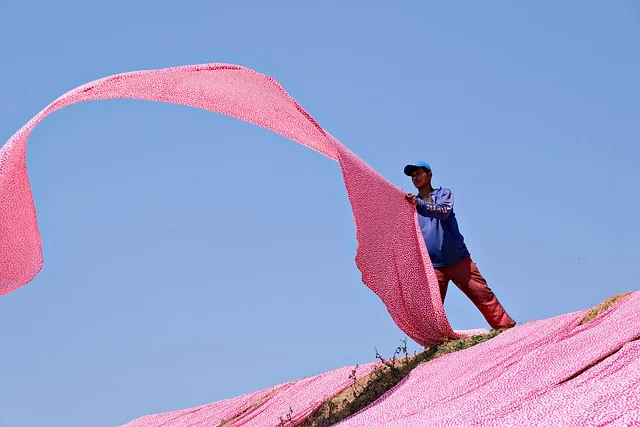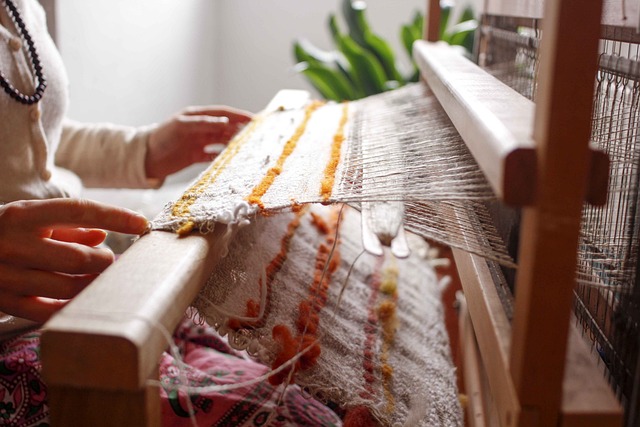The textile industry in Bangladesh is a critical part of the country’s economy, serving as one of its primary drivers of economic growth and development. Here are key aspects of the Bangladesh textile industry:
The Bangladesh Textile Manufacturing Market is valued at USD 19.04 billion in 2024 and is expected to grow to USD 25.25 billion by 2029, with a yearly growth rate of 5.81%.
Key Points:
GDP Contribution: The textile sector makes up over 13% of Bangladesh’s GDP.
Export Earnings: More than 84% of the country’s export earnings come from textiles and related products.
Investment: Around USD 15 billion has been invested in the primary textile sector.
Yarn Demand: The primary textile sector meets 85-90% of the yarn demand for knit garments.It meets 35-40% of the yarn demand for woven garments.
Overview
Economic Significance:
The textile and garment sector is the backbone of Bangladesh’s economy, contributing approximately 84% of the country’s total export earnings.
It is a major source of employment, employing around 4 million people, with a significant portion being women.
Global Position:
Bangladesh is the world’s second-largest exporter of ready-made garments, following China. The country is known for its competitive pricing, which has attracted numerous international brands and retailers.
Historical Context
The textile industry in Bangladesh began to grow significantly in the late 1970s and early 1980s.
The Multi-Fibre Arrangement (MFA) quota system, which restricted the amount of textiles and garments developing countries could export to developed countries, provided an initial boost to the sector by making Bangladesh an attractive sourcing destination after the quota was lifted in 2005.

Key Factors Contributing to Growth
Cost-Effective Labor:
Bangladesh offers one of the lowest labor costs in the world, which makes its textile products very competitive in the global market.
Government Support:
The government provides various incentives, such as tax holidays, duty-free import of machinery, and subsidies for energy and infrastructure improvements.
Infrastructure:
Significant investments have been made in building infrastructure to support the industry, including transportation networks, ports, and power supply.
Future Prospects
The future of the Bangladesh textile industry looks promising, with continued investments in infrastructure, technology, and sustainability. The industry aims to reach $50 billion in exports by 2025, leveraging its strengths while addressing existing challenges.
The rapid growth of the Bangladesh textile industry has brought about several significant challenges. These problems span various domains, including labor issues, environmental concerns, infrastructure limitations, and market dynamics.

Here’s a detailed look at the major problems:
- Labor Issues
Despite being one of the key factors that attract international buyers, the low wages of workers have led to widespread discontent and protests. The minimum wage in the garment sector is often criticized for being insufficient to meet the living costs. This significantly impacts the living standard of the labor.
Many factories have inadequate safety measures, leading to frequent accidents. Notable disasters like the Rana Plaza collapse in 2013, which killed over 1,100 workers, highlight severe shortcomings in factory safety standards. Many buildings are not made for the factories but people set up factories in the building to cost cutting which may lead to put lives of labor in danger. Condition of many buildings is worsening in the country for habitat. Many Buildings are so old and comes under the danger zone for people living and working there.
- Worker Rights:
Workers’ rights to organize and bargain collectively are often suppressed. There is a significant lack of union representation in the industry, making it difficult for workers to negotiate better terms.
Reports of forced labor, excessive working hours, and lack of proper rest are common. Many workers face immense pressure to meet production targets, leading to physical and mental exhaustion.
- Environmental Concerns:
Textile industry requires plenty of water. The textile industry is one of the largest contributors to water pollution in Bangladesh. Untreated wastewater containing dyes, chemicals, and heavy metals is often discharged into rivers, affecting the ecosystem and human health.
Factories emit significant amounts of greenhouse gases and pollutants, contributing to air quality deterioration in industrial areas.
Textile production is water-intensive. The overuse of water resources for dyeing and finishing processes is depleting local water supplies, affecting both agriculture and community water availability.
The industry relies heavily on non-renewable energy sources, contributing to the overall carbon footprint of the sector.
- Infrastructure Limitations
Unreliable electricity supply is a significant challenge. Frequent power outages disrupt production schedules, leading to delays and increased operational costs.
Despite subsidies, the high cost of energy remains a burden for many factories, impacting their competitiveness.
- Transportation and Logistics:
Bangladesh’s ports, particularly Chittagong, often face congestion, causing delays in the shipment of goods. This affects the supply chain and delivery schedules, impacting the credibility of suppliers.
Inadequate road infrastructure leads to logistical challenges, increasing the time and cost of transporting goods from factories to ports.
- Compliance and Safety Standards
Despite existing labor and environmental laws, enforcement is often weak. Corruption and lack of resources for regulatory bodies result in non-compliance by many factories.
Achieving and maintaining international certifications (e.g., LEED, Fair Trade) requires substantial investment, which can be challenging for smaller factories with limited resources.
Many factories operate in buildings that are not designed to handle the heavy machinery and large workforce typical of garment manufacturing. Ensuring compliance with building codes and safety standards remains a significant issue.
- Market Dynamics
Bangladesh faces stiff competition from other low-cost manufacturing countries like Vietnam, India, and Cambodia. These countries often have better infrastructure, higher productivity, and fewer compliance issues.
Over-reliance on a few key markets (e.g., the US and EU) makes the industry vulnerable to economic and policy changes in those regions.
Increasing consumer demand for sustainable and ethically produced garments is pressuring the industry to adopt greener practices. This transition requires significant investment in technology and process improvements.
The rise of fast fashion demands quicker turnaround times and lower costs, putting additional pressure on manufacturers to cut corners, which can exacerbate existing problems.
- Social and Economic Issues
While the majority of the workforce is female, women often face gender discrimination; lower wages compared to male counterparts, and limited opportunities for advancement.
Female workers frequently experience harassment and lack access to adequate healthcare and maternity benefits.
The industry’s dependence on external markets makes it susceptible to global economic fluctuations. Economic downturns in key markets can lead to order cancellations, factory closures, and job losses.
Addressing these challenges requires coordinated efforts from the government, industry stakeholders, international buyers, and civil society to ensure sustainable growth and improved working conditions in the Bangladesh textile industry.
- How ideology shapes society?
- The Story of Razia Sultana- the first female ruler of the Delhi Sultanate
- Why is America a Superpower?
- Huge Massacre in Bangladesh
- The problem of unemployment in India
